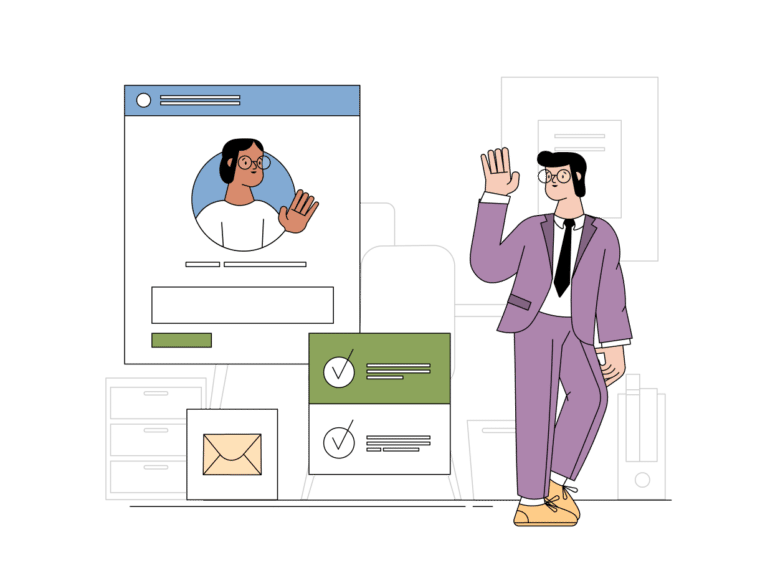Bias examples in hiring? Whether you like to admit it or not, there is always something at the back of your mind, affecting your decision with every hiring. However, this problem does not only apply to you, but thousands – if not millions – of other recruiters out there in the field. This phenomenon is known as unconscious bias in hiring, a problem that affects even the most renowned companies.
Unconscious or (more recently) cognitive bias is a personal and mental process that makes you classify certain candidates into stereotypes when they do things that do not specifically conform to your belief or value system. Another term for this may also be affinity bias, wherein you would rather pick a candidate who acts according to your value or belief system.
While there are many unconscious or cognitive bias examples to tackle, we feel that it is important to first explain why it is a problem in the first place. Then, we can discuss kinds of bias examples, from which we can derive specific unconscious bias examples. Lastly, we can offer you some tips to help remove unconscious bias in hiring in your organization.
Bias Examples: Why We Need to Tackle Unconscious Bias in Hiring?
Cognitive bias can affect companies in drastic ways, micro businesses and corporations alike. The most obvious reason would be that it will take more time and effort to hire suited candidates, all because the recruiter would rather have an employee who can act, talk, and think exactly like them.
Another reason to tackle unconscious bias in hiring is to make a more diverse workplace or organization. A diverse workforce is not only good for your reputation, but it also helps you see your company’s obstacles and problems from various perspectives. This will eventually help you to make better decisions that will increase problem-solving efficiency.
Aside from that, having a diverse workforce will also attract more of the younger generation to apply for the role you offer. The younger generation is highly aware of the issues that surround employment in various industries, especially discrimination of any kind. For this reason, they would rather opt to work for an employer with a more diverse workforce rather than an employer with better benefits but with little to no diversity with their employees.
Bias Examples: Types of Bias in Hiring
There are different kinds of biases that affect both your decision-making and hiring process. Awareness of these will permit you to reflect on your choices, essentially letting you tackle the problem as you see fit.
The University of Washington lists down three types of bias. With each one, we will give a short, yet concise description to help you identify whether the bias example you exhibit will fall under that category. However, there are also other bias examples that we will discuss later on, to help you further investigate any biases you might show when choosing a candidate for a role in the company.
1.Institutional Bias
Oxford Reference defines institutional bias as the tendency of administrative policies and processes to favor a “dominant” group in the workforce while making a disadvantage for the others. This can be presented as offering holidays that benefit only a particular religious group while ignoring the other holidays of another religion.
In terms of job postings and recruiting, an institutional bias example would be adding phrases like, “Preferably graduates of (school)”, “Holds a desired qualification”, and others which are similar.
This s one of the unconscious bias examples in hiring is a problem because it ignores the fact that there are other candidates from non-specific organizations or having no advanced degree that are just as capable as (or even more capable) than those who have it. This reduces the company’s opportunity to thrive because it becomes extremely and unnecessarily selective in the kind of people it wants to apply.
2.Explicit Bias
From the term “explicit”, explicit bias is a type of bias that you are aware of, may it be towards anything the applicant has said or put on their resume. This simply is a predilection towards a certain group of people or people who behave a certain way, like those who graduate from a specific school or belong to an organization.
One of the good explicit bias examples is looking for keywords in an applicant’s resume. This can be any word depending on you, the recruiter, but the most common type is the school the applicant graduated from. Some recruiters would prefer applicants and candidates that come from prominent schools, all while ignoring the applicants from other schools.
Much like institutional bias, this becomes a problem because the recruiter fails to see the competence and experience other applicants could have.
3.Implicit Bias
As opposed to explicit bias, implicit bias is when your subconscious feelings, beliefs, attitudes, values, and stereotypes affect your decision-making process. These beliefs or feelings can arise from past experiences or environmental influences, which means it’s not necessarily your fault.
However, that doesn’t mean that you shouldn’t bother being aware nor trying to change it, as this could massively affect your entire organization. An implicit bias example would be selecting candidates according to race because of how the media and other people depict certain races to be.one of the bias examples that is most likely to be the type of bias where your different cognitive biases root from. However, institutional biases and explicit biases can play a role too, as cognitive biases can occur even when you’re aware of your own preferences but not aware that it is affecting your decision in choosing an applicant.
Unconscious or Cognitive Bias Examples
Halo Effect
One of the most common unconscious bias examples that is widely shown by many recruiters is the halo effect. This effect occurs when the recruiter notices a physically outstanding trait in a person, may it be their height, weight, hairstyle, or any other observable trait.
This kind of unconscious bias example was first observed in the military, and confirmed when psychologist Edward Thorndike stated that commanding officers considered soldiers (whom they haven’t talked to) who were tall and fairly attractive to be more competent than others.
In the methods of recruitment today, this can be seen as selecting a candidate or applicant based on their video conference capabilities. Surely, it is an interview, but not all applicants have high-end appliances that will let them have a noise-cancelling microphone and HD camera.
Horn Effect
The horn effect is the exact opposite of the halo effect; where the halo effect occurs when you see a positive trait in someone, the horn effect takes place when you see a negative trait. One great example for this is declining an applicant when you see they have unruly hair or dirty nails.
One of the worst situations this can be seen in is when recruiters decline an applicant for their job because of their skin color or religion. This is tantamount to racism, a serious problem that should be tackled immediately if seen in the recruitment process. One could also say that a job interview held through a video conference creates room for the horn effect to work with the halo effect.
Leniency Effect
The leniency bias example is most often seen when close friends or family members apply for a job. Basically, this takes effect when the recruiter is scared to deny an applicant because they’re worried that it will damage the relationship with the latter.
Even when there are better applicants who have so much more potential and experience, the person chosen for the job is a friend or family member just so the recruiter can avoid dealing with the consequences. This is most especially true when friends and family apply for a position in a small business, closing the role off to people who could actually do a great job and bring the organization to places.
Confirmation Bias
On the other hand, confirmation bias occurs when the recruiter processes information when they specifically look for or even just interpret data that is consistent with their beliefs. This cognitive bias example could fall under the institutional bias type, wherein specific keywords that matches a recruiter’s belief is being scoured for.
If the applicant doesn’t have any of the keywords the recruiter is looking for, then they’ll be instantly declined – the rest of their qualifications being ignored. Now obviously, this is a harder kind of bias to tackle, but with strict discipline and honorable professionalism, then this kind of bias wouldn’t even affect the recruitment process at all.
Contrast Effect
Contrast effect is when your view of an applicant is heightened when comparing them to another applicant or when two applicants immediately follow the other in an interview. This unconscious bias example is the worst to deal with, as it is the recruiter’s job to pick the best candidate among many, which would need comparison.
However, it is helpful to know that the contrast effect puts you in a position where your decision is anchored on subjectivity, not objectivity. This means that you no longer look at what the applicant has to offer your company, but what makes the applicant better than the other.
Why is this a problem? Often, when you compare recruits to one another, you will have a tendency to lean towards one over the other. This blinds you to the capabilities the other recruit has to offer, which could still be better than the other recruit’s potential. This also means that you are comparing them on a certain basis, but that basis may not necessarily relate to the position at all.
Conformity Bias
As opposed to the leniency effect, conformity bias happens when your decision is influenced not by the consequences it could bring, but by the decision of the other people around you. If you are among many recruiters, then it would be difficult to put out an opinion that contradicts what could be unanimous.
This becomes a problem when you see a highly qualified candidate being ignored by the other recruiters, as you would rather just “go with the flow”. Needless to say, this will hinder your company from achieving its full potential because you chose not to say your opinion about a highly qualified applicant.
Personal Similarity Bias
This is one of the most rampant kinds of bias examples seen in all kinds of recruitment processes. Personal similarity bias, or simply just similarity bias, occurs when the recruiter has a tendency to hire an applicant based solely on the fact that the recruiter sees a personal similarity with the applicant.
This leads the recruiter to completely ignore applicants who are more capable and suited for the role simply because they see a similarity with them and the applicant.

Availability Heuristic
The availability heuristic, or availability bias, is defined as the tendency to make use of information that is easily accessible and create mental shortcuts to make a decision. This is closely related to the slippery slope fallacy, which is often used when a certain piece of information is used in a chain of events leading to a bad outcome.
This bias example occurs when an applicant says something in an interview that then affects your decision. What was said could be related to a memory where someone once told you what occurred and the consequences they had to take when they said the same thing as the applicant, so you give the applicant a yes or no depending on how the story ended.
Stereotype Threat
Stereotype threat is probably one of the worst kinds of bias any recruiter could show, as it bases the decision on the negative stereotypes about an applicant’s race, ethnicity, gender, religion, or culture. This means that you would deny an applicant simply because mass media has portrayed their cultural group in a negative light.
This can be easily avoided when recruiters simply consider the fact each applicant is just as qualified as one another for a certain job, and their identity doesn’t make them perform any better or worse. Though subtle in many recruitment processes, this is a major problem that is yet to be tackled by even the largest corporations.
Social Desirability Bias
This kind of bias is especially relevant today with the presence of “cancel culture”, as people would tend to only say things that are socially acceptable. While that may seem like a good thing, it also means that these people are choosing to leave out information that is socially undesirable, which basically means they’re lying.
This occurs in the recruitment process when the recruiter would make the “socially beneficial” choice, and not the one that would be best for the company. While diversity is a good thing, it wouldn’t help the company if substandard candidates are chosen to present a diverse and more socially accepted workplace.
Things You Can Do to Tackle Cognitive Bias
Now that we’ve discussed some of the kinds of biases you could identify in your recruitment process, it is time to take the necessary steps to completely remove them.
Review Job Descriptions
The job description in your company’s job postings is where bias in recruitment can begin. When making job descriptions, make use of inclusive language, so applicants of any race, gender, and culture will be enticed to apply.
After you’ve completed that, try to do the “flip test”, where you place yourself in an applicant’s shoes and see whether you would apply for the job based on the job description alone.

Be Aware of Bias on Video Calls
2020 has forced us to change our ways of working, and that includes hiring, as we now have to utilize the internet and other appliances more. However, not every applicant will have access to high-quality products, like a stable internet connection, work-friendly gadgets and appliances, and most importantly, a good working environment.
Interviews done through video calls can show so much about an applicant, but most importantly their environment. It is important to know that despite the internet connection, gadgets, and environment, a candidate can still have so much potential. Consider these only when they are truly essential to the role, like day-to-day meetings.
You might also like: Prevue Assessment: A Guide for Hiring Managers
Standardize Your Interviews to Avoid Bias
Having a standardized interview and set of questions will allow you and the other recruiters to easily eliminate bias in the recruitment process. This makes the decision-making process more objective and less subjective, giving you a better chance of seeing the candidate for their actual potential, and not just for their personality and physicality.
Awareness is the first step that everyone needs to take if they want to change something, may it be about themselves, an organization, or a system. Being aware of the present biases that affect your company’s recruitment process will show that you consider it a problem, and nobody likes to leave a problem unsolved.
Eliminating the bias and bias examples in your recruitment process will not only benefit the company, but you as a person. This way, you will also be able to see people for who they really are, and not just based on the stereotypes that social media and mass media often presents.

Remember, an applicant can be just as qualified as the other and still belong to a completely different cultural group or identity. It is your choice to make a decision that benefits the company, or your own predilections on people.
Do you want to share other bias examples you’ve encountered in your hiring process? Tell us in the comments. Finally, share this post on social media to help fellow HR professionals detect bias examples in their recruiting and hiring process.
